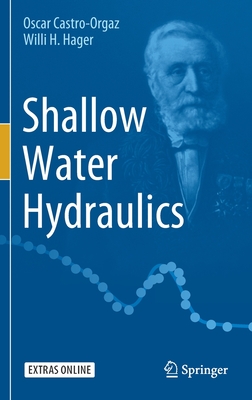Fluid Mechanics Experiments
暫譯: 流體力學實驗
Jazaei, Robabeh
- 出版商: Morgan & Claypool
- 出版日期: 2020-09-16
- 售價: $2,250
- 貴賓價: 9.5 折 $2,138
- 語言: 英文
- 頁數: 101
- 裝訂: Hardcover - also called cloth, retail trade, or trade
- ISBN: 1681739283
- ISBN-13: 9781681739281
-
相關分類:
流體力學 Fluid-mechanics
海外代購書籍(需單獨結帳)
商品描述
Fluid mechanics is one of the most challenging undergraduate courses for engineering students. The fluid mechanics lab facilitates students' learning in a hands-on environment. The primary objective of this book is to provide a graphical lab manual for the fluid mechanics laboratory. The manual is divided into six chapters to cover the main topics of undergraduate-level fluid mechanics. Chapter 1 begins with an overview of laboratory objectives and the introduction of technical laboratory report content. In Chapter 1, error analysis is discussed by providing examples. In Chapter 2, fluid properties including viscosity, density, temperature, specific weight, and specific gravity are discussed. Chapter 3 revolves around the fluid statics include pressure measurement using piezometers and manometers. Additionally, hydrostatic pressure on the submerged plane and curved surfaces as well as buoyancy and Archimedes' Principle are examined in Chapter 3. In Chapter 4, several core concepts of fluid dynamics are discussed. This chapter begins with defining a control system based on which momentum analysis of the flow system is explained. The rest of the chapter is allotted to the force acting on a control system, the linear momentum equation, and the energy equation. Chapter 4 also covers the hydraulic grade line and energy grade line experiment. The effect of orifice and changing cross-sectional area by using Bernoulli's' equation is presented in Chapter 4. The application of the siphon is extended from Chapter 4 by applying Bernoulli's' equation. The last two chapters cover various topics in both internal and external flows which are of great importance in engineering design. Chapter 5 deals with internal flow including Reynolds number, flow classification, flow rate measurement, and velocity profile. The last experiment in Chapter 5 is devoted to a deep understanding of internal flow concepts in a piping system. In this experiment, students learn how to measure minor and major head losses as well as the impact of piping materials on the hydrodynamics behavior of the flow. Finally, open channels, weirs, specific energy, and flow classification, hydraulic jump, and sluice gate experiments are covered in Chapter 6.
商品描述(中文翻譯)
流體力學是工程學生最具挑戰性的本科課程之一。 流體力學實驗室為學生提供了動手學習的環境。本書的主要目的是提供一本針對流體力學實驗室的圖形實驗手冊。手冊分為六個章節,以涵蓋本科水平流體力學的主要主題。第一章開始於實驗室目標的概述以及技術實驗報告內容的介紹。在第一章中,通過提供範例來討論誤差分析。第二章討論流體性質,包括黏度、密度、溫度、比重和比重。第三章圍繞流體靜力學展開,包括使用壓力計和水柱計的壓力測量。此外,第三章還檢視了浸沒平面和曲面上的靜水壓力,以及浮力和阿基米德原理。第四章討論了流體動力學的幾個核心概念。本章開始於定義控制系統,並基於此解釋流動系統的動量分析。本章的其餘部分分配給作用於控制系統的力、線動量方程和能量方程。第四章還涵蓋了液壓梯度線和能量梯度線實驗。使用伯努利方程展示了孔口和變化橫截面積的影響。第四章延伸了虹吸的應用,並應用伯努利方程。最後兩章涵蓋了內流和外流的各種主題,這些主題在工程設計中具有重要意義。第五章處理內流,包括雷諾數、流動分類、流量測量和速度剖面。第五章的最後一個實驗專注於深入理解管道系統中的內流概念。在這個實驗中,學生學習如何測量次要和主要的水頭損失,以及管道材料對流動的水動力行為的影響。最後,第六章涵蓋了開放渠道、堰、特定能量、流動分類、水力跳躍和閘門實驗。






























